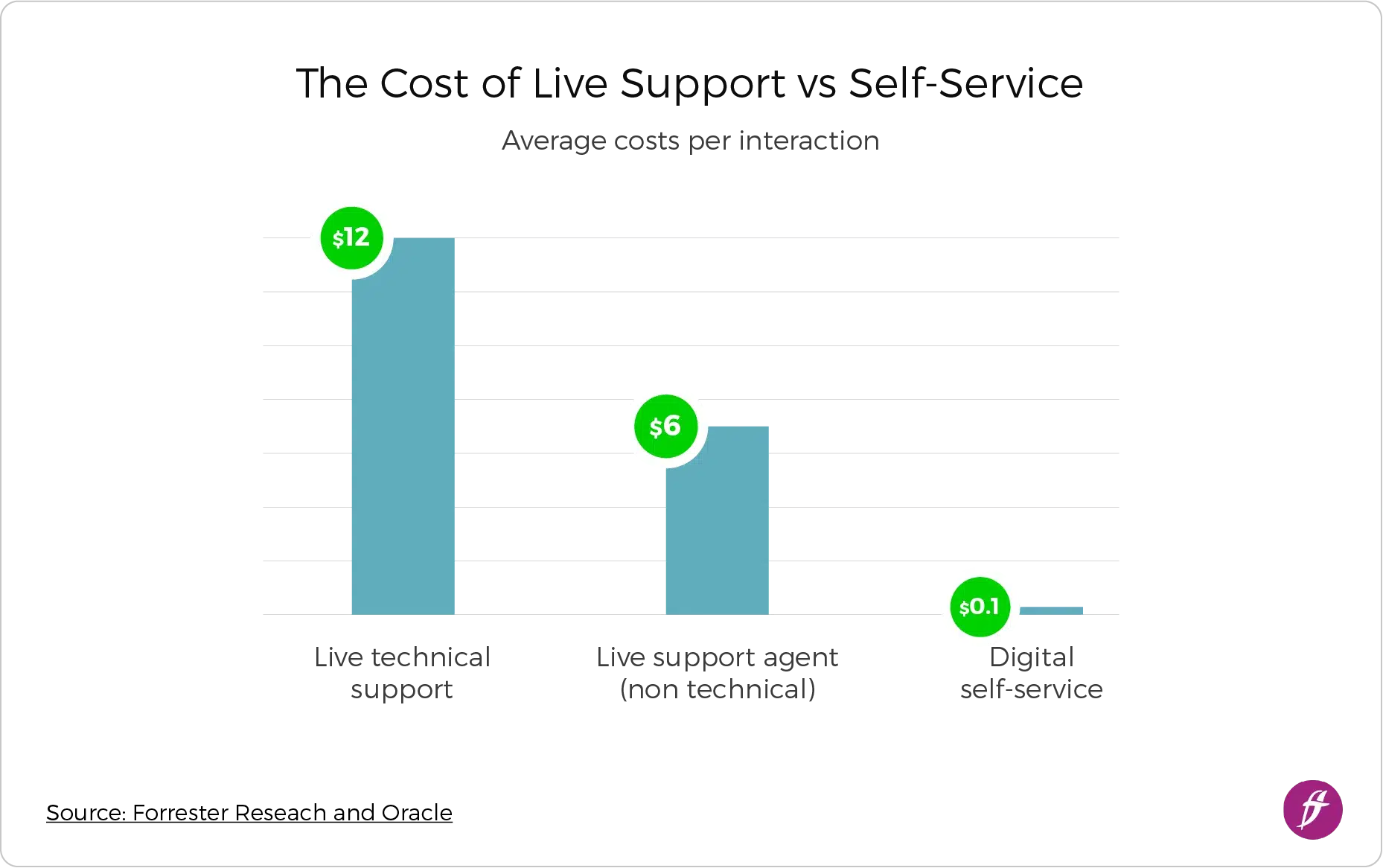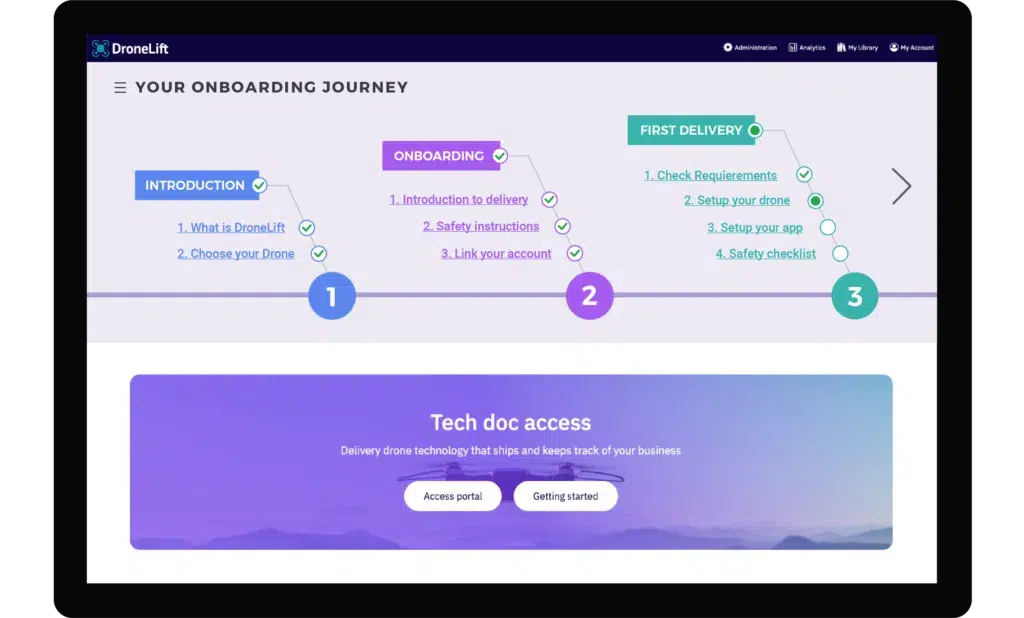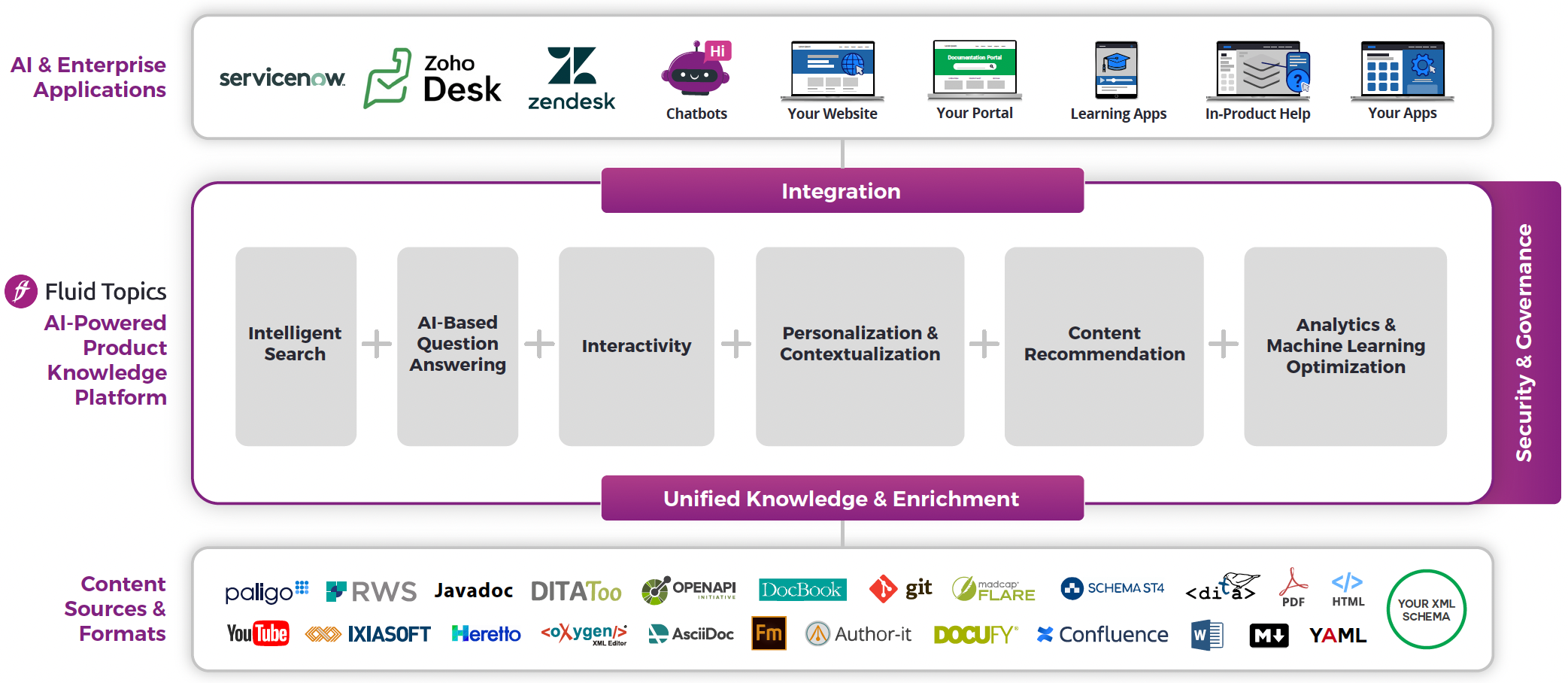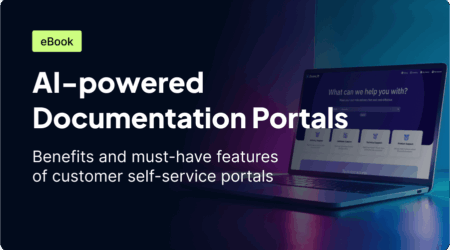
6 Benefits of a Self-Service Portal
Explore several advantages of self-service portals including enhanced customer autonomy, reduced support costs, and increased product visibility. Then learn how to access these benefits with Fluid Topics.

Table of Contents
- What is a Self-Service Portal?
- 6 Benefits of Self-Service Portals
- 1. Enhance Customer Autonomy
- 2. Boost Customer Engagement
- 3. Reduce Support Costs
- 4. Streamline Onboarding Process
- 5. Increase Product Visibility
- 6. Optimize Customer Journey Insights
- How Fluid Topics Can Support Your Self-Service Portal
- Conclusion
Customers taking the initiative to find information and solve problems on their own is nothing new. Whether it’s using a banking app to send wire transfers or requesting a return slip with the touch of a button, today’s users are highly self-reliant. In fact, most prefer resolving issues themselves over contacting customer support.
Therefore, offering a digital self-service portal for customers is no longer a “nice to have” feature. It’s a necessity that customers expect, but many companies are still working to deliver better solutions. While 77% of companies report offering custom self-service portals, the majority aren’t fully scaled or adopted by customers. It’s time to clear up the disconnect. Let’s look at the benefits of self-service portals then outline a solution with the features and functionalities you need to provide a user-friendly experience for autonomous customer problem-solving.
What is a Self-Service Portal?
Customer self-service portals are secure, digital hubs where users can access all relevant company content from a single source. Self-service content may include anything from technical documentation to knowledge base articles, FAQs, community forums, installation guides, product manuals, and more. Often referred to as documentation portals, these tools put the customers in control. Users can quickly search for the information they need, follow significant updates, and even submit requests when additional help is needed.
6 Benefits of Self-Service Portals
88% of today’s customers would like companies to offer self-service portals they can access from anywhere. They also expect easy retrieval of information, consistent experiences across channels, and exceptional customer service. When businesses meet these expectations, the rewards are undeniable. Let’s look at the top six advantages of these portals in greater detail.
1. Enhance Customer Autonomy
61% of customers prefer using self-service options for simple issues over speaking with support agents. Self-service portals give customers 24/7 access to the resources they need to solve problems or find information on their own. They offer unmatched flexibility and efficiency to empower users to take control of their interactions with your company. This not only enhances their overall experience but also fosters a sense of trust and satisfaction, as they address their needs on their own terms.

2. Boost Customer Engagement
When companies provide targeted information to users at the right place and time, it boosts user engagement and product adoption. Users are increasingly tech savvy and expect quick service and seamless interactions, making convenience a top priority. By providing easy access to training tools and relevant content, companies empower users to achieve their goals more efficiently, leading to greater satisfaction and long-term product loyalty.
How can businesses boost customer engagement? 71% of users report personalized experiences as necessary and 76% express frustration when these expectations aren’t met. By offering features like feedback tools and tailored recommendations in their self-service portals, companies keep users engaged while addressing their specific needs.
3. Reduce Support Costs
The explanation for this benefit is in the name – self-service portal, as in, users provide their own customer service. Therefore, they no longer need to open a help desk ticket and speak to a support representative. In fact, 65% of support teams report decreased call volumes after investing in self-service options. By automating simple tasks and reducing ticket volume, you also optimize workloads, allowing employees to be more efficient so they can focus on high-value tasks. In short, self-service means lower support costs.

Some companies are going one step further, integrating AI chatbots into their self-service offers. Chatbots provide 24/7 responses to user questions in a conversational, human-like way, helping reduce tickets for users who prefer summarized answers rather than reading through documentation search results.
4. Streamline Onboarding Process
Offering an effective customer onboarding process is essential for product adoption. Depending on the product complexity, digital self-service onboarding can supplement live, in-person processes. Self-service portals provide the relevant training materials (e.g. tools, services, content, etc.) users need to get started, reducing the time it takes them to ramp up from novice to product expert. Personalized, flexible onboarding processes foster autonomy, helping customers take ownership of their journeys to become experts in your company’s product in their own time.

5. Increase Product Visibility
Companies are great at improving their corporate website SEO but often overlook opportunities to improve product awareness and brand visibility thanks to product documentation. Businesses should have the tools to define which content is public and which is gated or confidential. Documentation that is defined as publicly available should be visible for search engines to crawl and index, and therefore, can contribute to SEO efforts. As a result, the public content offered through self-service portals serve as beneficial tools for bringing increased website traffic. A heightened visibility of your customer portal content in search results leads to increased awareness of your product and brand, which also boosts company credibility.
Portals are similarly a good opportunity to leverage other company content such as blogs, Q&As, and customer service FAQs. This ensures business resources coming from different teams with unique perspectives on customer needs are available in one location.
Teradata's technical documentation website is now the company's most visited website with over 5 million visits in the last year alone.
Beth McFadden
Technical Project Manager for Content Operations at Teradata
6. Optimize Customer Journey Insights
Anytime customers engage with your company content, there are valuable metrics you can measure and extract from these interactions. With a self-service portal, your business will learn more about what your users need, how they access your company’s content, and whether your content is helping them successfully resolve their issues.
Most teams are familiar with Google Analytics. But for companies looking for insights around how customers self-serve, there are portals that offer in-depth content analytics.
How Fluid Topics Can Support Your Self-Service Portal
Helping customers solve their own problems is more efficient than ever with self-service portals. Fluid Topics’ AI-powered Product Knowledge Platform (PKP) offers the advanced features needed to maximize the benefits you’ll gain from this self-service portal. Our PKP is the top choice of enterprises across industries. It offers a turnkey portal that can be set up in a matter of minutes along with other features such as content ingestion and unification, AI-powered search, interactive tools, dedicated content analytics and robust security measures.

Additionally, it provides ready-to-use GenAI applications that facilitate a more conversational self-service experience on your portal.
Conclusion
Improving customer support with a single tool has never been easier – a critical insight given 86% of customer service leaders named improving the customer experience as their #1 priority and challenge. A self-service portal offers a seamless way for companies to boost user satisfaction and reduce tedious support tickets. The benefits are clear. All that’s left is to get started, and Fluid Topics is the leading solution to build your portal.
Self-Service Portal FAQ
The key differences between an Product Knowledge Platform and a Documentation portal lie in their scope, functionality, and intended use. An PKP is a broader system designed to aggregate knowledge and deliver it across multiple channels – including a documentation portal. A documentation portal, on the other hand, is a more specialized tool designed to provide users with technical or product-related documentation. It focuses on offering self-service access to resources like manuals, FAQs, installation guides, and technical support content.



